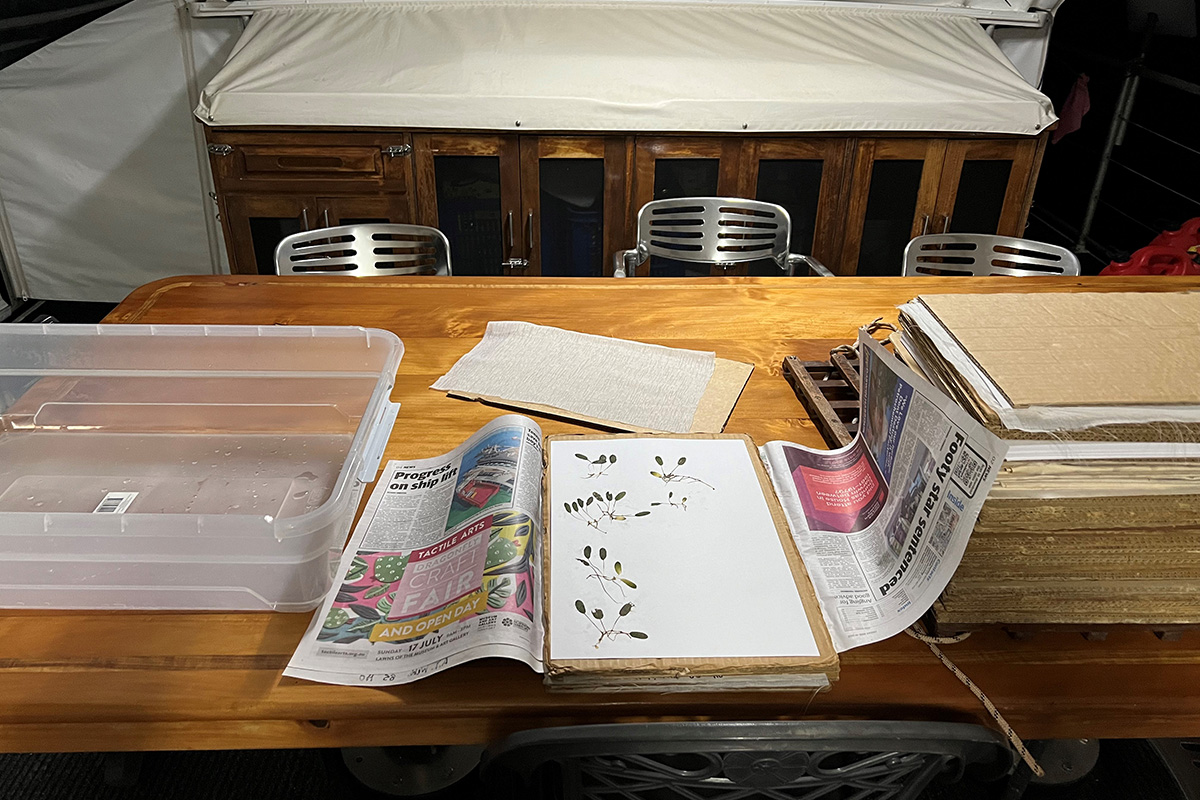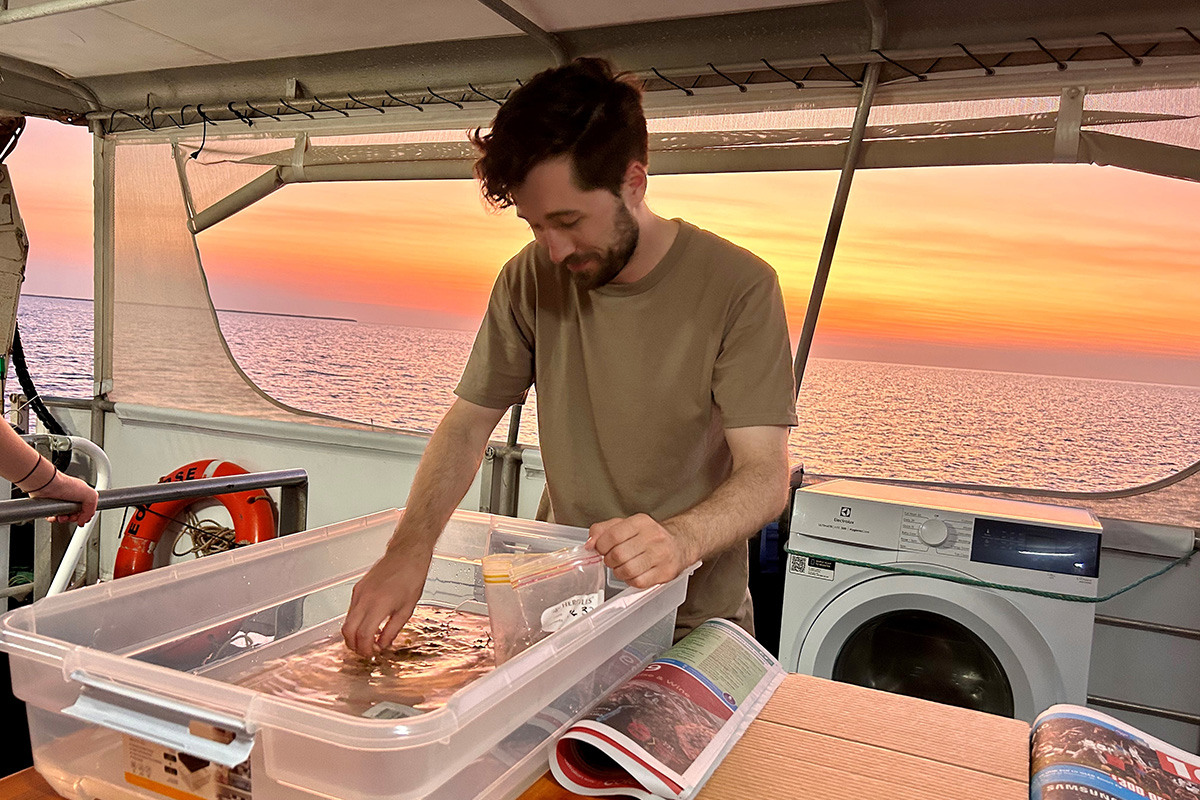Seagrass survey in the Gulf of Carpentaria
Seagrasses are an important part of marine ecosystems in the Northern Territory, providing food, shelter and nursery grounds to many different aquatic species. Despite their name, seagrasses are not ‘true’ grasses.
They differ from seaweed (algae) by having flowers and fruits, similar to what you might find in terrestrial plants. Despite their significance, seagrass species remain under-represented by collections housed at the NT Herbarium. As such, tropical seagrass species distributions in the Northern Territory (NT) are poorly documented based on specimen records, and species composition from prior survey is difficult to validate.
In mid-October, Aiden Webb from the NT Herbarium spent three days on the water surrounding the Sir Edward Pellew Group of Islands, in the Gulf of Carpentaria. There, he joined researchers, Li-Anthawirriyarra Sea Rangers, Traditional Owners and Parks and Wildlife officers on boat-based seagrass monitoring surveys, with a view to collect representative specimens to take back to the NT Herbarium.
During the surveys, seagrass was observed using drop cameras with a live feed back to the boat. Where the plants were found in abundance, a small grab bucket (or Van Veen grab) was used to haul them up into the boat, where samples were identified and sorted for later processing. Once survey was finished for the day, seagrass samples were cleaned, organised, dried and kept in a plant press to best preserve them in perpetuity.
Aiden demonstrated these collecting and preservation techniques to researchers, with a view to facilitate further collections made in the NT during their ongoing work. Additional material was collected to be distributed around Australia, exchanged with herbaria in Queensland and South Australia. Exchange of tropical seagrass specimens may aid in future research focusing on their systematics and taxonomy.
As a result of the trip, 29 new seagrass collections across 8 different species were added to the NT Herbarium collection. Some of these collections represent only the second or third collection event for those species made in the NT, while others were the first collections made displaying fruits or flowers. Ultimately, the NT Herbarium seagrass collection was increased by approximately 40% over only a very short period of time. Additional collections will improve tracking of seagrass species composition over time and start to fill in species distribution gaps in the NT.
Seagrass survey is ongoing around the Tiwi Islands in November and planned once again in the Gulf of Carpentaria in 2024. Further additions to the seagrass collection at the NT Herbarium are expected.



